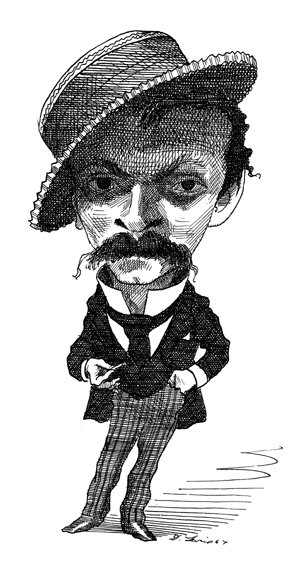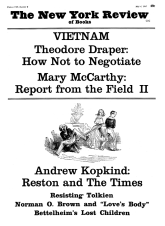The Joyce Collection at Cornell includes among its curiosities a description of Joyce by Ettore Schmitz, otherwise known as Italo Svevo. In 1906 Schmitz, manager of a paint factory in Trieste, hired Joyce to teach him English. One of the set exercises was a description of the teacher. The text of Schmitz’s effort is given in Richard Ellmann’s biography of Joyce and reprinted now in Mr. Furbank’s study of Svevo. Schmitz fastens upon his teacher in motion, in gesture, walking, as if the Master were Jacques Tati in Monsieur Hulot’s Holiday. Joyce seems to Schmitz “a man who considers things as points breaking the light for his amusement.” It is hard to decide whether this is as brilliant as it sounds or merely a stumble into profundity caused by the difficulties of English grammar. It is a remarkable epiphany, however achieved. But it applies even more splendidly to Svevo than to Joyce.
Most of Svevo’s comedy arises from the amused consideration of man’s double nature, body and spirit. The body in tandem with the spirit is funny enough, but not so funny as the two pedaling in opposite directions. Svevo’s cousin in philosophy is Descartes, in art Thurber, in psychology Pavlov. There is a magnificent paragraph in the “Short Sentimental Journey” (1925) where old Signor Aghios is accosted by a porter at the railway station in Milan. The porter speaks in Milanese dialect, which the old man, a Triestino, does not understand. So he attends, instead, to the porter’s smile, confident that a tip will keep it in place. The trouble is that a smile, if neglected or abused, changes into a scowl, a leer, a grimace:
Signor Aghios exploited his little tips like a born miser. He did not want to buy much with them—only lasting friendship. Therefore he began by paying less than the normal amount. Generally the recipient did not protest, but stood staring with amazed disbelief at the small sum in his outspread palm. Then, and only then, Signor Aghios would put further coins, one by one, into the other’s hand, until it closed and a smile appeared on the porter’s face. Thus that smile, which had been so slow to appear, was stamped the more indelibly in Signor Aghios’s memory, and sweetened his way for hours and miles ahead. Sometimes, before he had finished doling out the entire tip, the porter would get tired and stamp off with a rude word. When that happened, Signor Aghios went away with the tip in his pocket, but happy none the less—for he had quarrelled with an enemy, not a stranger.
In “Argo and his Master” (one of the last stories) Svevo tells of a man who tries to teach his dog Argo to talk, a feat already accomplished by a dog in Germany. The lessons, strictly speaking, are a failure. But Argo teaches the teacher. The problem is that Argo issues philosophical statements but he never explains them. “Animals are perfect but imperfectible,” the teacher concludes. “It is the one who studies them who must be able to progress.” When Argo came down from the mountain to the valley, he showed that he recognized his old friends. “He didn’t forget, but neither did he remember. He held things in abeyance.” Soon after, the dog dies from neurasthenia.
This Issue
May 4, 1967






